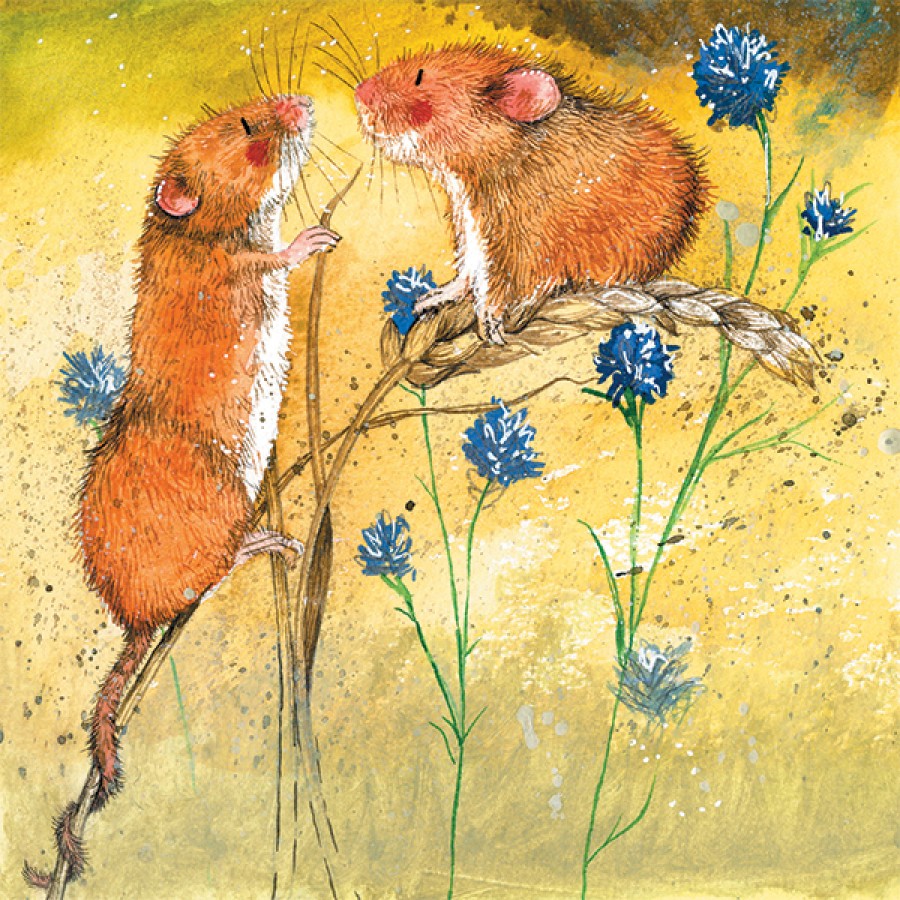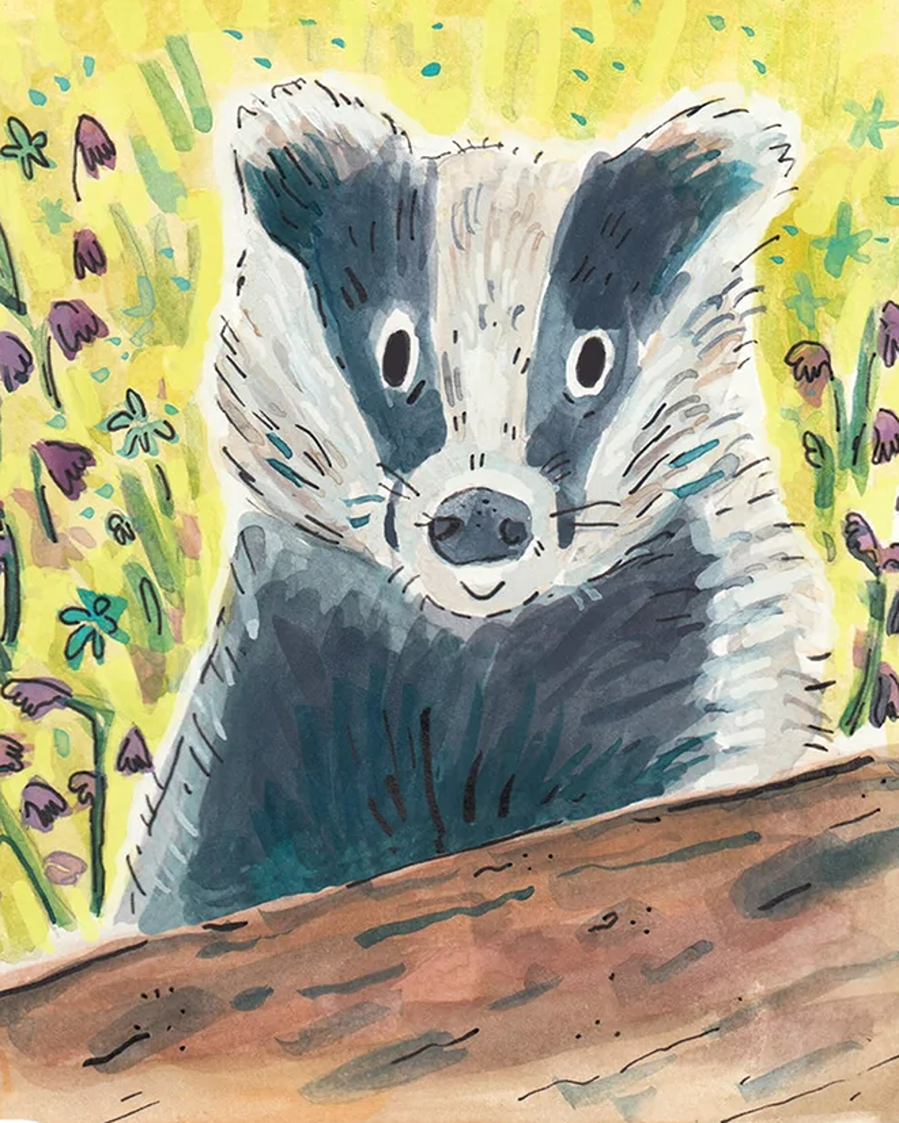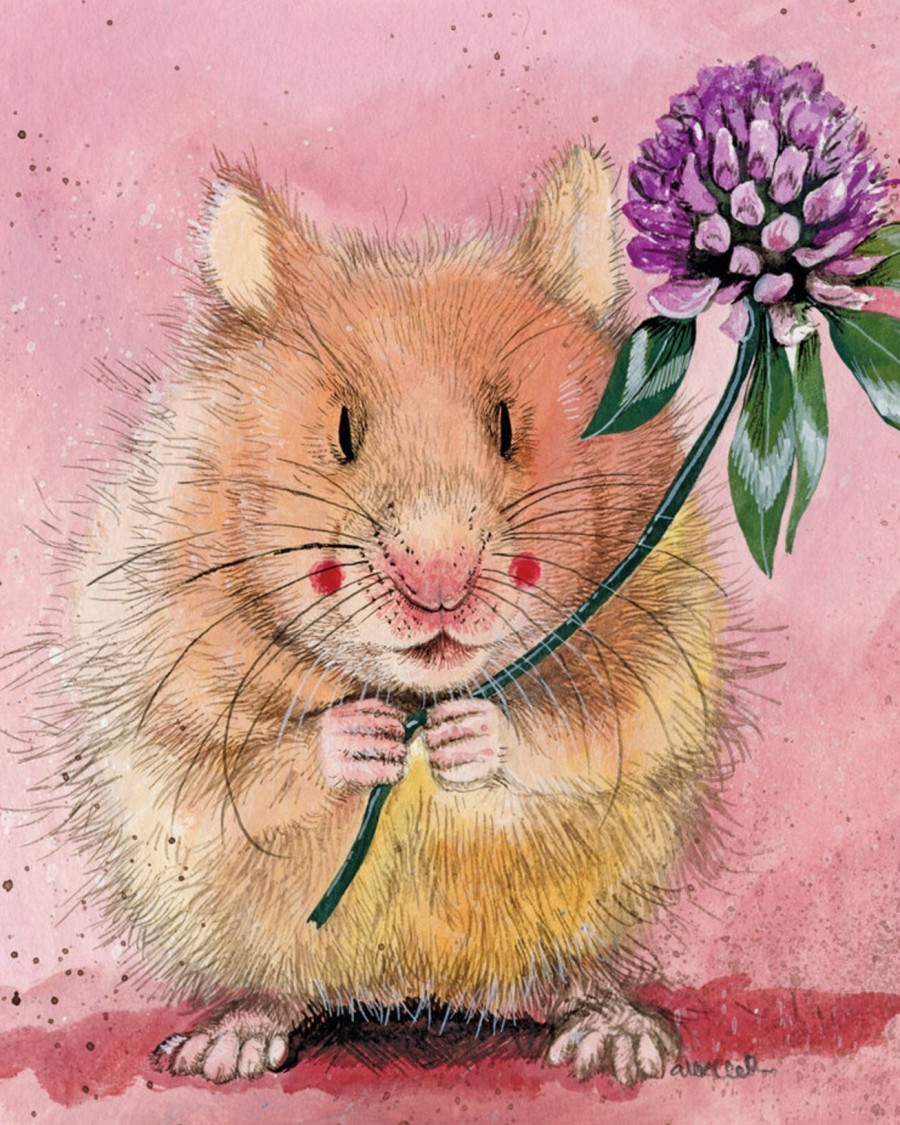Let’s Meet England’s (not scary!) Mice
Although some people are scared of mice, this is not a natural fear (like of heights) and we think mice are nice! England has three native ‘outdoor mice’ who likely won’t go anywhere near you, as they mostly live in woods and farmland. Where they live on insects, vegetation, berries, nuts and seeds. Also read how to help endangered dormice.
Wild mice groom themselves and each other, wiping their faces and ears with their feet – then use their mouths to wipe their tails clean! They look similar to voles. But the latter are easier to spot during the day, and have smaller eyes and ears.
Wood Mice (field mice)
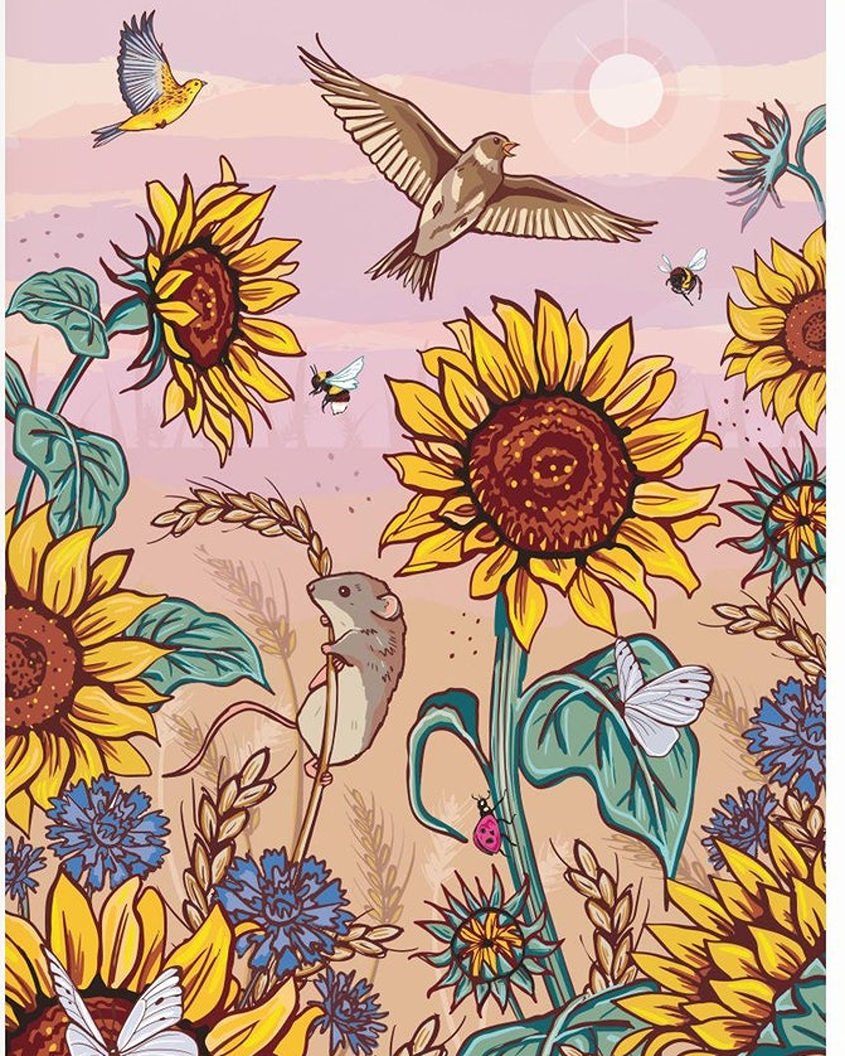
These are shy nocturnal creatures that live on seeds, nuts, earthworms, caterpillars and centipedes. Their many predators include owls, kestrels, foxes, stoats and weasels.
Uniquely, they can shed their skin to try to escape predators (but only once). Unlike grey-brown house mice, these have brown fur with large black eyes, and bigger ears.
Yellow-Necked Mice
These are found in southern England and the Midlands. As the name suggests, they have a yellow band of fur around their necks. Smaller than wood mice, they are very good at leaping away from predators.
Harvest Mice
These are tiny, with chestnut-coloured fur and a long tail to grip plants. They often live near farms with cereal crops (or near reedbeds) to build nests. Their numbers have reduced by 70% due to lack of habitat.
A project to rewild 150 harvest mice on an Ealing Nature Reserve is planting trees and reed beds. Grass will remain un-grazed, to provide nesting material for the patter of harvest mice babies!
How to Help England’s Wild Mice

Don’t drop litter in the countryside. If you smoke, use a personal ashtray (dropping a butt on dry grass can cause wildfires). Don’t have barbecues in the countryside or woods, and avoid releasing balloons or fire lanterns (these travel before falling from the sky).
Inspect sheds and outbuildings before knocking them down (and only after youngsters have left the area). As mice, hedgehogs and frogs shelter or hibernate inside or under them.
Although yellow-necked mice like hedgerows and fruit orchards, many come indoors in cold weather.
Main threats to wild mice are farm chemicals and lack of woodland habitat. So support local organic box schemes and farm shops, and buy recycled paper products:
Wild mice often hide in birdboxes. So as with birds, choose plain wooden ones (for the right species, sited properly).
Never use coloured or tin birdhouses, these attract predators and can over-heat.
How to Humanely Deter Mice
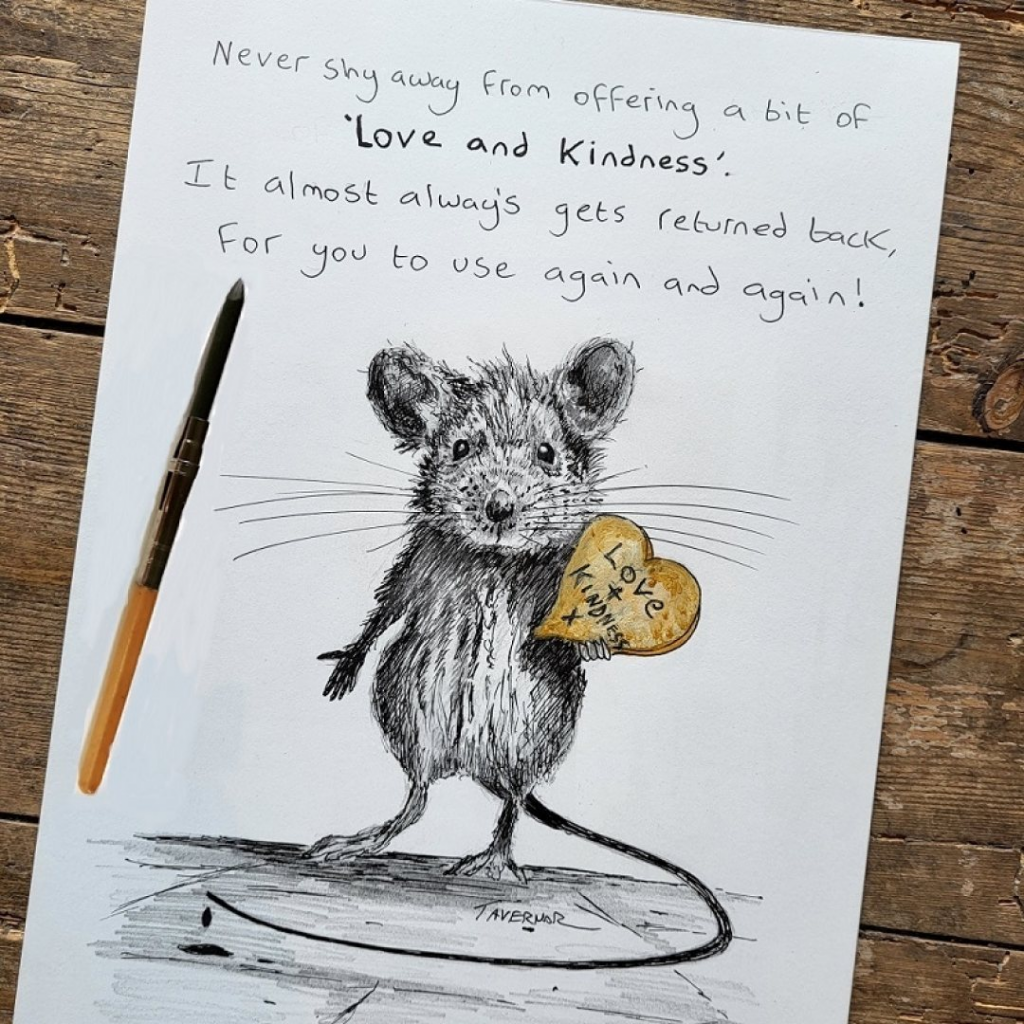
Mice in buildings are simply searching for warmth, food and shelter. There are many simple ways to deter them:
- Don’t leave food lying around (toaster breadcrumbs, pet food and spilled birdseed). If you keep chickens, collect eggs regularly (this will also deter rats).
- As rodents can carry zoonotic disease (that can transfer to humans), dispose of any food that mice may have eaten, and wear gloves when transferring or handling mice.
- If you make garden compost, don’t compost animal foods (nor poo from meat-eating animals). Use quality compost bins, with animal latches to deter. Rodents are shy (and don’t like new environments) so place near heavy footfall areas (also move garden furniture around).
- Gull-proof sacks are emptied and reused (to avoid gulls, foxes and rodents tearing apart plastic sacks, to find food).
These only work if emptied regularly, not kept inside as some councils suggest, as it can cause issues with rodents, rather than help.
How to Keep Mice from Entering Buildings
- Trim foliage at least 18 inches from your house’s foundation, to deter mice from finding entry points.
- Mice can fit through tiny holes and pipes, so sprinkle a little flour along walls to detect tracks, then seal cracks around drainpipes with expanding foam insulation or wire wool (if no electrical wiring). Use a chimney cap for open chimneys.
- Mouse Mesh is a fantastic invention that fts to the outside of buildings, to stop mice entering inside. Keep the grille clear of leaves and don’t cover vents to prevent carbon monoxide poisoning. Also sold in a thicker version (to deter rats!)
Avoid Unkind Mouse Traps & Poisons

Not only are mouse traps unkind (and can target birds, hedgehogs and pets), but they leave baby mice behind (even if you don’t care, dead mice leaves behind a permanent terrible smell).
Glue traps are sadistic (securely wrap and bin). Conventional ‘snap-traps’ are designed to give a quick kill, but often trap legs and backs (one ‘goodnature’ trap claims to guarantee a quick kill, but you have to buy add-ons to ensure cats and hedgehogs don’t get trapped).
Humane live traps sound better, but there are issues:
- They must be checked regularly (else mice die slowly, often from hypothermia due to condensation building up inside the trap).
- Babies are still left behind, if the mouse is released.
- Rodents are ‘neophobic’ which means they fear new spaces. So they will return, if not released at least 500m way. And then likely die of starvation or thirst, or be attacked by predators.
If you do trap mice, try to relocate to a nearby shed or building, for best chance of survival.
Despite it being legal to trap mice, it’s UK law that once a trap is set, you have responsibility to ensure no unnecessary suffering.
RatMat has excellent reviews, and would also work for mice. It gives an electric (mild) shock once, then rodents never go near the area again. This product has been tested extensively, offering food for 5 months after a shock, with no takers.
Not nice to give a shock, but far better than all the various traps and poisons on the market.
Of course, adopting a rescued cat or two is a good deterrent. However, you may have to deal with dead or half-dead mice on your doorstep now and then. And it’s not always a quick kill.
Tips for Adopting Pet Mice
Blue Cross has thousands of rescued mice waiting for forever homes, if considering adopting pet mice (with care advice). Sadly we presently live in a country where people can just pop to a pet store and buy animals, with no knowledge on how to take care of them. RSPCA also has good tips for caring for pet mice.
Just like hamsters, mice are not good ‘first pets for children’ as they are easily frightened, don’t like being handled, easily injured (pick them up gently with both hands as a ‘cup’ (near a surface, in case they fall) and nocturnal (so won’t appreciate being woken up).
Mice only live a couple of years at most, and are social creatures who should be placed with other mice (not rats). Females together are good (a neutered male can peacefully live with females or sometimes a sibling, but don’t introduce males from other families).
Mice also breed fast, which is why neutering/spaying is important. This is why adopting from animal welfare charities that know their stuff, is far better.
Mice need clean spacious ventilated accommodation (with access to water in a shallow bowl and food – they don’t need cheese!) Site their home away from draughts, direct sources of heat and other pets.
Shredded paper or dust-extracted bedding should be used over wood or scented bedding (not good for their delicate respiratory systems). And access to good affordable vet care.
Support Humane Medical Research

Vivisection is a social evil, in an age where humane medical research can perform the same experiments, without using animals. So only donate to these wonderful charities that do so much good, but get little publicity and no government funding.
Although other animals are also used in vivisection labs (dogs, rabbits, monkeys etc), nearly all ‘test’ animals are mice and rats. Yet Animal Free Research UK is replacing mice with lab-grown tumours for breast cancer research, which is kinder, quicker, cheaper and more accurate.
The main cancer research charities still ‘grow tumours’ in caged mice (studied and killed in their hundreds of thousands), but the results are not that helpful for humans.
Dr Cinzia (who works at University of Nottingham) has used humane research funding to develop human cell-based organoids, which resemble human breast tissue, and are ideal to study early stage progression of breast cancer, which could pioneer effective safe treatment and higher survival rates.
But you won’t see this research on TV ads, because humane research charities use funding to pay her salary, rather than send you free pens.

